Recent Articles
Popular Makes
Body Types
2015 Land Rover Discovery Sport Road Test and Review
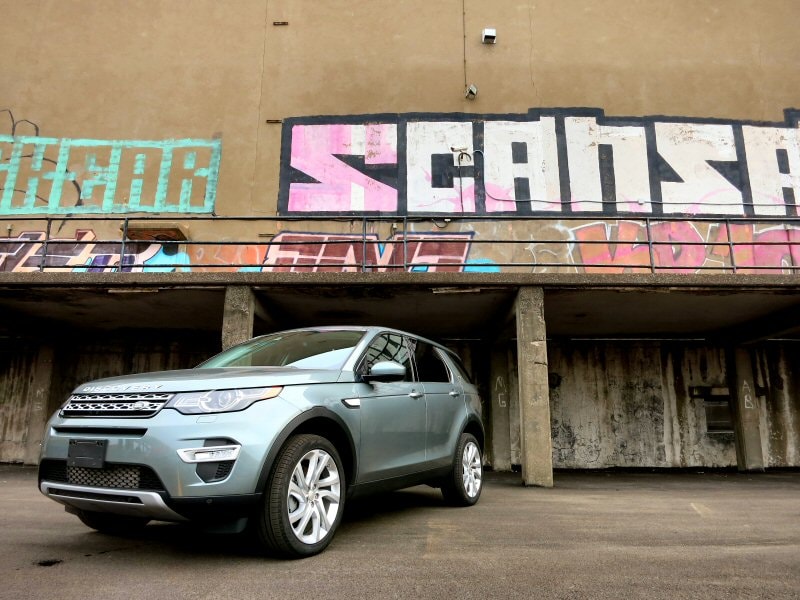
2015 Land Rover Discovery Sport front 3/4 ・ Photo by Benjamin Hunting
It is no longer possible for premium automakers to ignore the potential presented by the entry-level luxury SUV segment, especially those that happen to specialize in high end family transportation. Looking to leverage its sport-utility acumen and revamp its image amongst compact SUV shoppers, the 2015 Land Rover Discovery Sport is a kick in the pants from the British brand that aims to sweep up buyers lured into showrooms by the Range Rover Evoque's sultry, come-hither looks, but forced to reality check their need for daily practicality. A welcome step-up from the Land Rover LR2 it has been designed to replace, the all-new 2015 Land Rover Discovery Sport indicates that the company's decision to invest in both ends of its line-up is paying dividends.
A Sleeker Look For Family Shoppers
One of the first things you'll notice about the 2015 Land Rover Discovery Sport is the longer, leaner look that comes as part of its upgraded platform. Whereas the LR2 that previously sat in the Discovery Sport's showroom spot (and is actually still lingering on throughout the current model year as old inventory is sold off) was of the upright and stubby school of SUV design, the Disco heads in a more rounded direction.
A visually extended hood, gently sloping roofline, and a shorter rear overhang give the Land Rover an aero-friendly feel that's more in keeping with the brand's current styling language. LED lighting is also to be found front and rear on certain models. Unlike the Range Rover Evoque - the more upscale prong in Land Rover two-front attack on the compact segment - the Discovery Sport isn't nearly as distinctive when placed alongside its luxury people mover cohort. Still, it's a handsome package that will feel as equally at home at the country club as it will in the parking lot at work on Monday morning.

Photo by Benjamin Hunting
Avoid The Third Row, Enjoy The Interior Room
A further benefit of the 2015 Land Rover Discovery Sport's extended footprint as compared to the LR2 is a somewhat roomier cabin (and one that absolutely dwarfs that of the Range Rover Evoque). There are 60 cubic feet of cargo space to be had behind the front two positions in the Discovery Sport (with all other rows of sating folded forward, of course), and even with a load of five passengers you'll still benefit from a very usable amount of room for hauling your gear. The Discovery Sport outshines contemporaries like the Mercedes-Benz GLC-Class and the Audi Q5 when it comes time to load up and roll out, but it's a bit tighter inside than the BMW X3 and the Acura RDX.
Unfortunately, Land Rover designers were tempted by all of this available real estate and came up with a third row option for the vehicle: avoid it unless you plan on transporting very young children all the way at the back of the SUV. Better to select the two-row configuration and maximize comfort by way of the sliding and reclining bench.
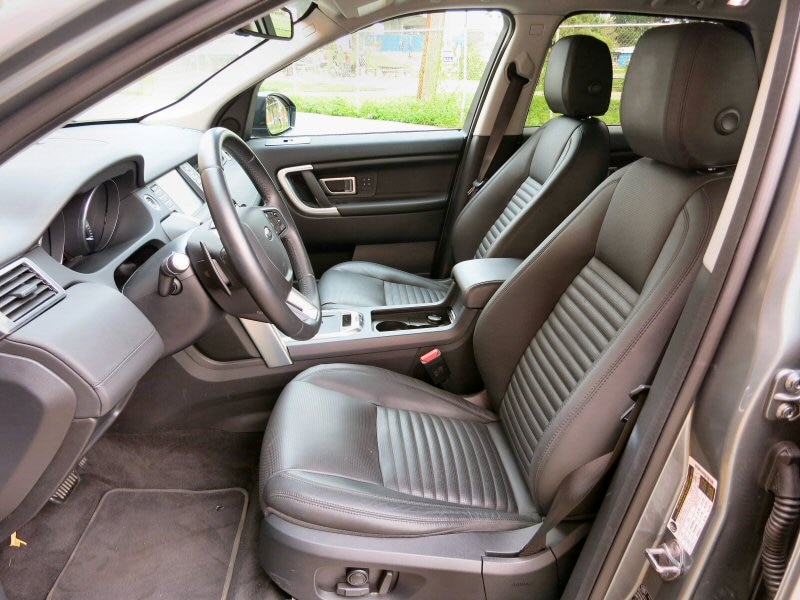
Photo by Benjamin Hunting
Upgrades Abound Inside
A few too many years separated the LR2 from its most recent refresh, which translated into an interior whose age was beginning to show. The 2015 Land Rover Discovery Sport adds not just detail to a formerly-spartan entry-level option from the brand, but it also introduces nicer materials throughout the entire cabin, with a focus on touch points (armrest, dashboard, seats) and brighter trim.
There's still some hard plastic to contend with - particularly on top of the door sills (where the window switches have been positioned far away from driver and passenger), but overall it's a cheery and welcome update that maintains Land Rover's forthright presentation of information displays, dials, and vehicle controls. The only real legacy bits of the LR2 that linger on seem to be in the gauge cluster, an area where the Discovery Sport could benefit from the introduction of a full-LCD option to keep up with the expectations of increasingly-coddled buyers.
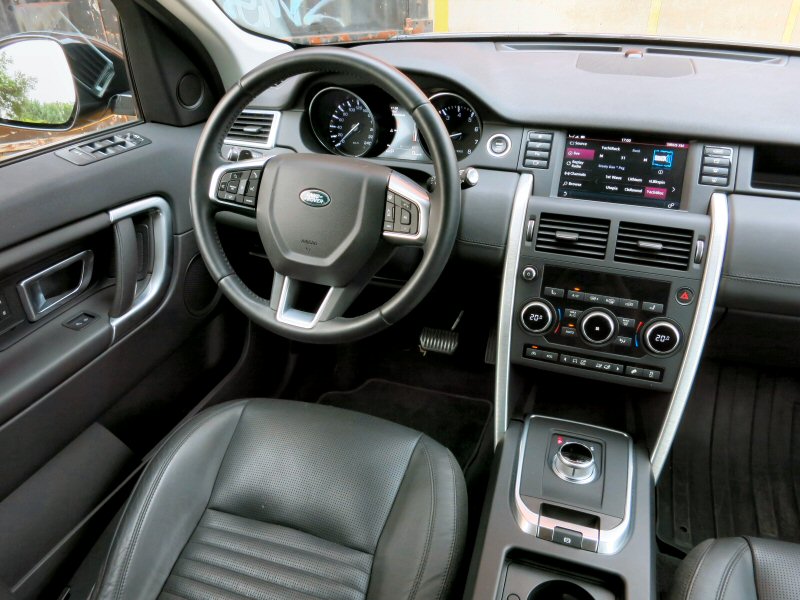
Infotainment System Still Needs Work
An attempt has also been made to achieve the same window dressing with the 2015 Land Rover Discovery Sport's infotainment interface, but the results are more mixed. There's no question that the screen perched at the top of the Discovery Sport's center stack features better-looking graphics than are offered by several other Land Rover products, but underneath the glitz trouble is brewing.
I had a number of issues with the Disco Sport's Bluetooth system during my time with the vehicle, as it would frequently severe ties with my mobile phone, or randomly refused to pick up incoming messages. I also experienced numerous occasions where the entire system would freeze - usually while browsing satellite radio presets - and stop responding to my touch even after turning the car on and off.
Land Rover's entertainment and communications interface has never been a strong point, but in the past the worst that you would be in for was slow reaction times and a somewhat confusing menu system. I think an update or two is likely in order to smooth over some of the bugs in the new software.

Photo by Benjamin Hunting
Turbocharged Engine Does The Job, But Only Just
One aspect of the 2015 Land Rover Discovery Sport that hasn't changed is its standard (and only available) engine. Peek under the hood of the Discovery port and you'll find the same 240 horsepower, 2.0-liter turbocharged four-cylinder unit that also motivated the LR2 (and currently pulls duty in the Range Rover Evoque).
Capable of generating 250 lb-ft of torque, this motor has seen the LR2's six-speed automatic transmission swapped out in favor of a nine-speed autobox. The change was done in the name of both performance and efficiency, but while the Evoque seems to have nailed down the requisite shift logic to achieve both of these goals the heavier Discovery Sport isn't quite as successful. Acceleration is not at the level one would expect from a luxury SUV, and while the Land Rover can get out of its own way when pushed the vehicle's drivetrain is defined more by its hesitance than its responsiveness in most driving situations.
Hope is on the horizon, as Land Rover and Jaguar have co-developed a new turbocharged four-cylinder engine - the Ingenium - which is poised to begin infiltrating the respective line-ups of each company next year. The current turbo four isn't exactly a museum piece, but paired with the nine-speed in its current configuration it seems flummoxed by the mass of the Disco Sport.
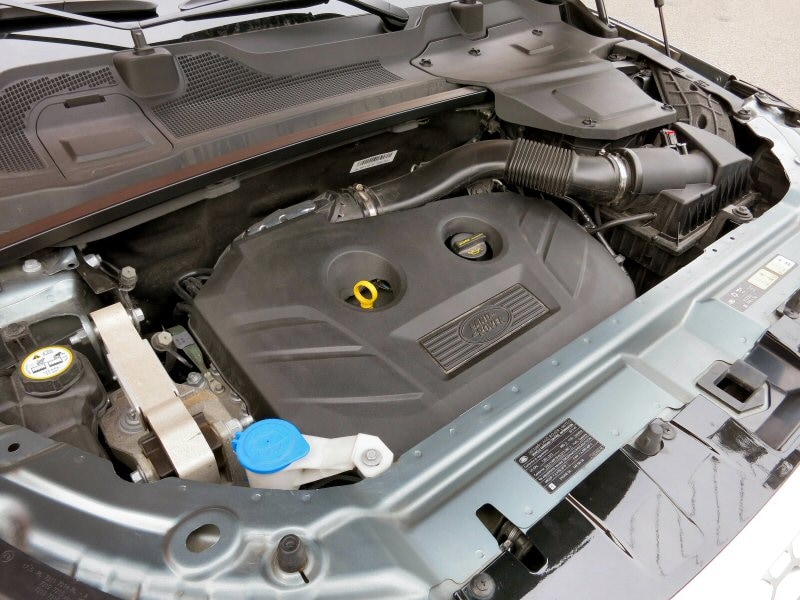
Photo by Benjamin Hunting
Off-Road Capability (You'll Most Likely Never Use), On-Road Smoothness You'll Appreciate
As with all Land Rover SUVs, no matter how affordable, the 2015 Land Rover Discovery Sport is a formidable tool for dealing with rough ground. The Discovery Sport's Terrain Response system can be configured - at the touch of a button - to deal with a disparate list of obstacles, including sand, mud, snow, and rock. The standard all-wheel drive system that comes with the Discovery Sport is not on par with a more dedicated off-roader like the LR4 or even the Range Rover Sport, but the vehicle will have no trouble dealing with the vast majority of sticky situations presented to it by its mostly urban buyer demographic.
In more forgiving driving scenarios the Land Rover ups its comfort quotient as compared to the LR2. The SUV features a quieter cabin that is well insulated against the noise of the outside world as well as potholes and railroad crossings thanks to suspension tuning that walks the line between the brand's rugged image and the smooth ride desired by luxury-conscious clientele. Handling isn't as crisp as you'd find in a vehicle like the BMW X3, but the Discovery Sport acquits itself well enough to stay in the good graces of its pilot when entering and exiting the highway or negotiating narrow rural roads.

Photo by Benjamin Hunting
Leap-Frogging The LR2 With Active Safety Upgrades
A major difference between the departing LR2 and the new-to-the-game 2015 Land Rover Discovery Sport can be spotted in the safety department, where the latter's fresh platform allows it to play host to a wide range of important passenger protection technologies. It's a serious upgrade: the Discover Sport now boasts the availability of a lane departure warning system, a forward collision warning feature (including automatic braking for collision avoidance), and a blind spot monitoring system, none of which were offered with the LR2. This is no minor consideration when trying to make entry-level luxury in-roads, as the option of advanced driver's aides is an important factor in family buying decisions.
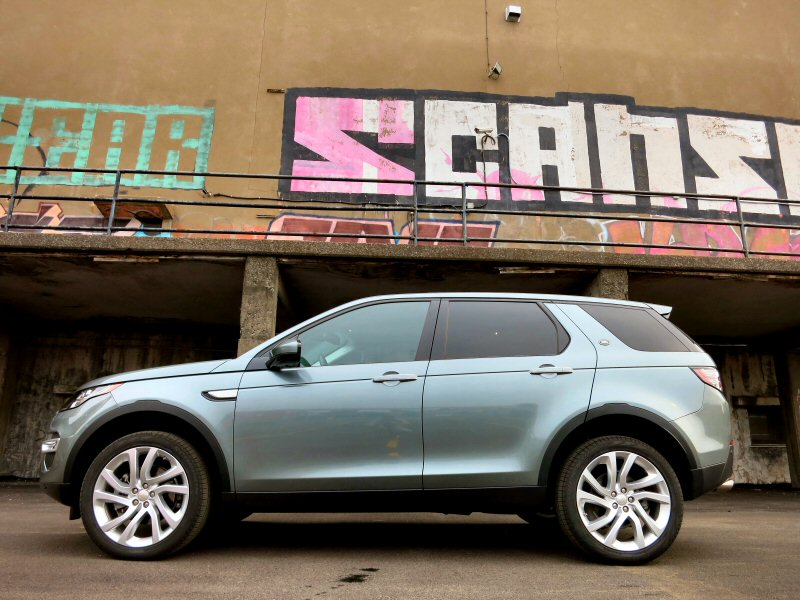
Photo by Benjamin Hunting
A Strong Step Forward For Land Rover
When the Land Rover Range Rover Evoque was introduced as a 2012 model it made a strong statement, not just by way of its extroverted, fashion-first design, but also by illustrating that segment-leading luxury could be right-sized onto a compact platform and not lose any of its distinctive appeal.
The 2015 Land Rover Discover Sport is a similarly important effort from the brand, but not for the same reasons. While the LR2 at times felt like a placeholder shipped overseas to hold down the fort while Land Rover concentrated on bolstering the pricier entries in its catalog, the Discovery Sport comes across as a legitimate shot at wooing luxury-hungry families intrigued by the image and practicality of the Land Rover LR4, but turned off by its plus-size platform.
The Evoque might turn heads, but it’s the more useful proportions of the Discovery Sport - and its more accessible price tag - that will spread butter on the bread at Land Rover from a sales perspective. No longer an outsider amongst other luxury compact SUVs, the Discovery Sport seems poised to point at a higher volume future for the distinguished British builder.
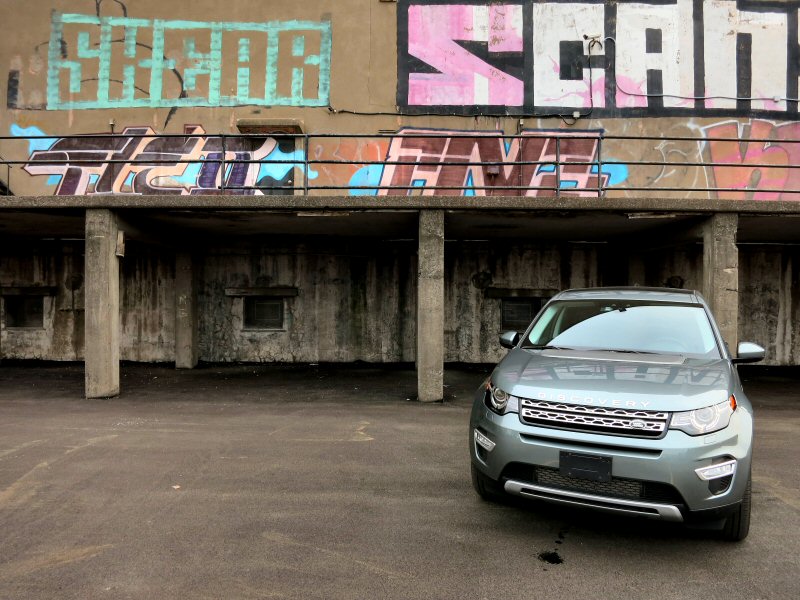
Photo by Benjamin Hunting
2016 Land Rover Discovery Sport Pros / Cons
Pros:
- More accessible styling
- Improved interior room and materials
- Comfortable ride
- Outmatches all other SUVs in its class when driven off-road
- Excellent array of available advanced safety technologies
Cons:
- Nine-speed automatic / turbo four engine combo offer average performance
- Fuel economy is similarly middling
- Optional third row suitable for children only
- Infotainment system still needs a few bugs worked out
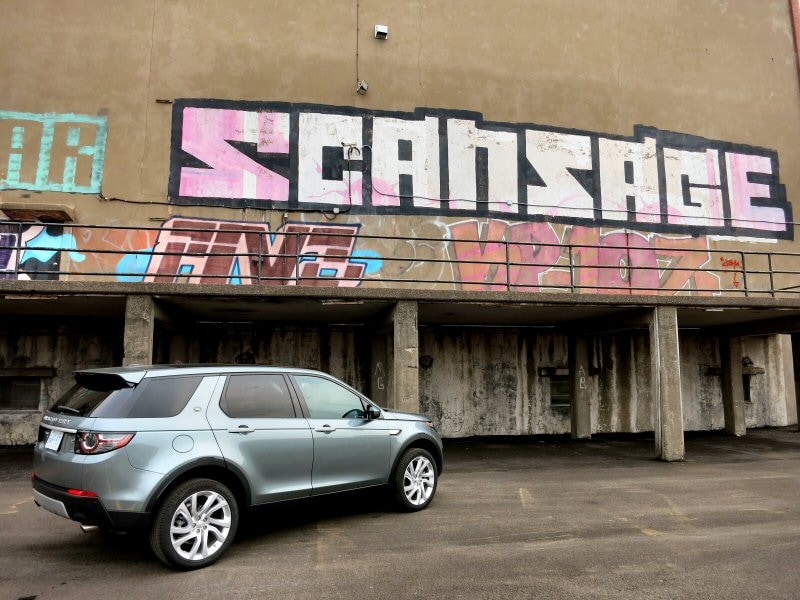
Photo by Benjamin Hunting